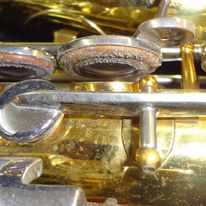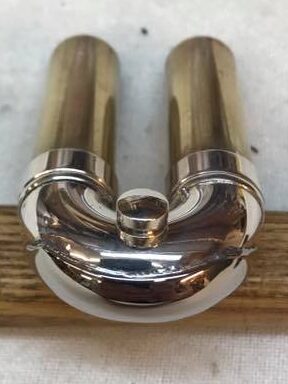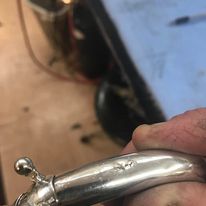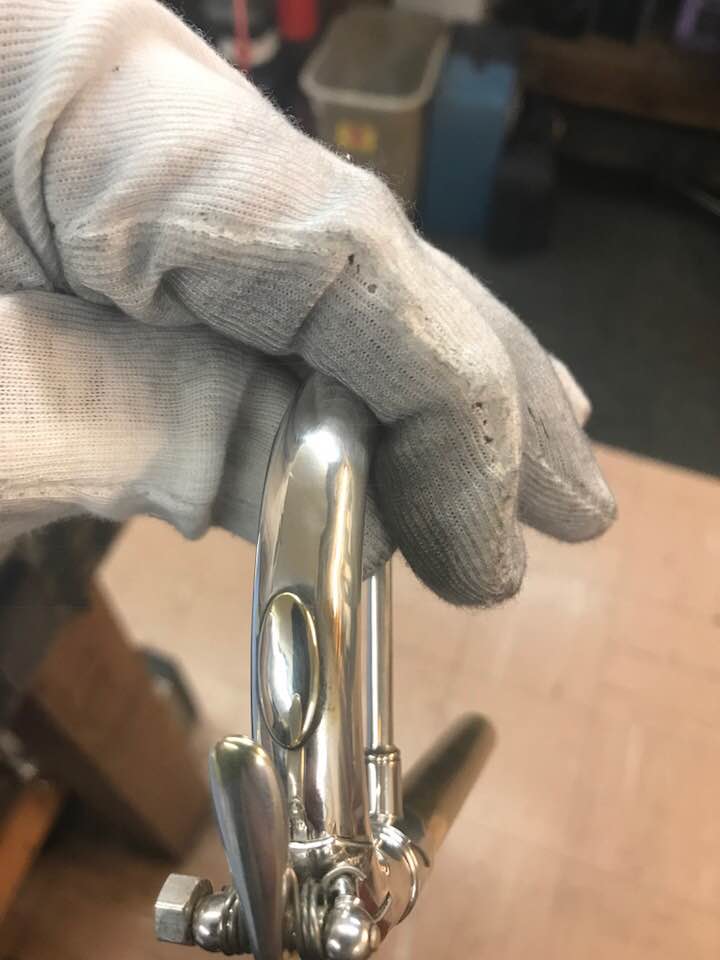Professional washouts and occasionally a chemical cleaning/neutralization are vital to preservation of your instrument and health. Below are before/after photos of brass parts that have been chemically cleaned.
Here is a link to a great article describing why cleaning is so important:
https://www.hornmatters.com/2011/05/what-is-red-rot/
Here is another link to some additional excellent information on hygiene, general cleaning, and how to disinfect and sanitize your instrument.
https://www.nfhs.org/articles/covid-19-instrument-cleaning-guidelines/
Whatever you do, don’t let your instrument get like this! (This was actually brought to me for an estimate years ago, but it had experienced a flooded basement and then sat for some time). ICK! Yes, that is mold. And typically this can only truly be remedied by repadding the instrument after full disassembly and a thorough cleaning.

“True Red Rot is the complete breakdown of the alloy, and it occurs from the inside of a tube and proceeds outward. In this case, the loss of zinc from the brass is substantial and throughout the thickness of the part. It is identifiable as a reddish patch on outside of the tube, roughly circular, with a pin-point dark spot in the very center.
At this spot the alloy has failed completely, leaving a weak structure of copper behind. You can put a probe on the spot and push all the way through without effort. The metal has failed.” -From Bruce Hembd article above.
In this case, the metal has failed, but you could not tell because the dezincification had taken place under a layer of silver-plate. This is an example of patching. Sometimes an entire crook or leadpipe of a brasswind may need to be replaced, but this method can save time and money if the damage isn’t too extensive.



